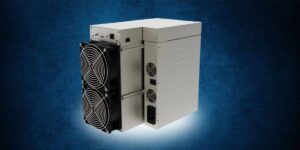Introduction

The digital gold rush of the 21st century, cryptocurrency mining, has seen a significant upsurge in interest across Australia. With the promise of rewards in the form of digital currency, many are diving into the world of crypto mining, eager to stake their claim. But embarking on this digital venture is more complex than plugging in a computer and watching the digital coins roll in. It requires a well-thought-out plan, starting with building a reliable crypto mining rig.
This guide is your roadmap on how to build a crypto mining rig in Australia, detailing the crucial steps from budgeting to deciding between ASIC and GPU rigs. Unveil the intricacies of crafting a robust mining setup and get ready to mine your own cryptocurrency.
How to Build a Crypto Mining Rig?
Starting your journey into Bitcoin mining involves a series of strategic decisions and steps to ensure that you’re setting up a profitable and efficient mining operation.
Here’s how you can begin:
Selecting Hardware
The first step in mining Bitcoin is to choose the right hardware. Your choice should depend on your mining goals, budget, and the level of flexibility you desire in your mining activities.
Mining Software
Once you’ve selected your hardware, the next step is to choose the mining software that will run on your rig. This software connects you to the Bitcoin network and the blockchain, enabling your hardware to interact with other miners, solve computational puzzles, and add new blocks to the blockchain. There are numerous mining software options available, each with its own set of features, interface, and compatibility with different types of hardware.
Setting Up Your Mining Rig
After acquiring the necessary hardware and selecting your mining software, you’ll need to set up your mining rig. This involves assembling your hardware components, installing the mining software, and configuring your setup to connect to a mining pool or operate solo.
Monitoring and Maintenance
Successful Bitcoin mining is not just about setting up your rig but also involves continuous monitoring and maintenance. Keep an eye on your rig’s performance, temperature, and overall health to ensure it operates efficiently.
What are the crypto coins to mine?

One of the questions most searched by cyrpto beginners aside from “How to build a crypto mining rig” is “What are the crypto coins to mine?” Besides Bitcoin, numerous other cryptocurrencies offer mining opportunities. These include Ethereum, Litecoin, and newer entrants like KASPA, each with its mining complexities and rewards.
Can I build my own Bitcoin miner?
Yes, building a Bitcoin miner is possible with the right knowledge and components, allowing for a customized mining experience.By opting to build it yourself, you gain the opportunity to tailor your mining rig to your specific needs and preferences.
For those embarking on this journey, seeking assistance from specialized vendors such as Mining Store Australia can be incredibly beneficial. We offer valuable guidance and supply a range of high-quality crypto mining parts, ensuring your custom mining rig is both efficient and effective in the competitive world of cryptocurrency mining.
Components of a Crypto Mining Rig
Building a crypto mining rig requires assembling a set of core components that work together to mine cryptocurrencies efficiently. At the heart of this setup are the Graphics Processing Units (GPUs), which are responsible for executing the complex calculations needed for mining. Alongside GPUs, a mining rig includes a motherboard that connects all components, a reliable power supply unit (PSU) to provide sufficient energy, adequate RAM for the system’s smooth operation, and a storage device, typically an SSD, for the operating system and mining software. Cooling systems, such as fans or liquid cooling solutions, are crucial to keep the hardware at optimal temperatures and prevent overheating.
What Are the Crypto Mining Rig Parts?
Each component in a mining rig plays a pivotal role in its operation. The power supply unit (PSU) is the backbone, providing energy to the entire setup. GPUs, the workhorses of the rig, perform the actual mining calculations. The motherboard serves as the central hub, connecting all components, while RAM and storage (SSD or HDD) support the rig’s computing needs. Effective cooling mechanisms, whether air or liquid-based, ensure that the rig operates within safe temperature ranges, protecting components from heat-induced damage and prolonging their lifespan.
What do I need to start a crypto mining rig?
To start a crypto mining rig, you’ll need the following components: a powerful CPU, a motherboard with sufficient PCIe slots, one or more high-performance GPUs or ASIC miners, a reliable power supply unit (PSU), memory (RAM), a solid-state drive (SSD) for installing the operating system and mining software, cooling solutions to manage heat, and a stable internet connection. Additionally, setting up a digital wallet for the cryptocurrency you plan to mine is essential for receiving your mining rewards.
How much does it cost to build a crypto mining rig?
The cost of building a crypto mining rig in Australia can vary widely, primarily based on the choice between ASIC and GPU rigs, as well as the scale of mining operations. A basic GPU rig can start from a few thousand dollars, while a high-end setup with multiple advanced GPUs or ASICs can soar into tens of thousands. Factors influencing cost include the price of individual components like GPUs, ASIC miners, power supply units, and cooling systems. It’s also essential to consider ongoing expenses such as electricity, which can significantly affect the overall profitability of the mining operation.
You can purchase a mining rig for $3,000-$6,000 in Mining Store Australia based on your preferences and requirements. Book a free call with us and our professional team will help you build your mining rig.
How many GPUs are needed to mine 1 Bitcoin?
The number of GPUs required to mine one Bitcoin depends on the GPUs’ efficiency and the mining rig’s overall setup. To know more, book a free consultation with us so we can discuss your needs.
Step by step guide to building your mining rig

Building a crypto mining rig involves several key steps, from selecting the right components to assembling and configuring your system. Here’s a comprehensive guide to help you construct a mining rig that suits your needs and budget:
Step 1: Research and Planning
- Understand Your Goals: Determine what you aim to achieve with your mining rig. Are you mining as a hobby, for profit, or to support a particular cryptocurrency network?
- Select the Cryptocurrency: Choose which cryptocurrency you’d like to mine based on profitability, mining difficulty, and personal interest.
- Budgeting: Set a budget for your mining rig. Remember, the cost can vary significantly based on the components you choose.
Step 2: Selecting Components

When venturing into crypto mining, one of the most crucial decisions involves selecting the right components for your mining rig. This choice will significantly impact your rig’s efficiency, profitability, and longevity. Here’s a guide to help you make informed decisions:
- GPU or ASIC?: The first decision is whether to opt for a GPU-based mining rig or to invest in an ASIC miner. GPU rigs offer versatility, allowing you to mine a variety of cryptocurrencies. On the other hand, ASICs provide unmatched efficiency for mining specific cryptocurrencies. For those looking to mine with precision and power, ASIC miners are the go-to choice.
- Graphics Cards (GPUs): For GPU rigs, selecting high-performance graphics cards is critical. Key factors to consider include the GPU’s hash rate, power consumption, and price. High hash rates increase your chance of solving cryptographic puzzles and earning rewards but remember to balance power efficiency to keep operational costs manageable.
- CPU: Your CPU plays a supportive role in your mining rig. While it’s not the star of the show like your GPUs or ASIC miner, ensuring you have a stable and reliable CPU is essential for the overall functionality of your mining setup.
- Motherboard: The motherboard acts as the backbone of your rig. Look for one with sufficient PCIe slots to accommodate your chosen number of GPUs or the connectivity for your ASIC miner.
- Power Supply Unit (PSU): A robust PSU is crucial. It should not only cater to your current power needs but also offer some headroom for potential future upgrades.
- RAM: A minimum of 4GB of RAM is necessary, but opting for 8GB or more is advisable for smoother operation, especially if you plan to run multiple processes or mine more demanding cryptocurrencies.
- Storage: A solid-state drive (SSD) with at least 240GB is recommended for its faster data access speeds, which contribute to quicker boot times and more efficient mining software operation.
When it comes to selecting an ASIC miner, our product, the Bitmain Antminer KS3, stands out as a stellar option. Tailored for mining KASPA, the Antminer KS3 delivers a hash rate of 8.3 – 9.4 TH/s for a power consumption of 3200W, striking an excellent balance between power and efficiency. This model is especially appealing for those targeting the KASPA ecosystem, offering a focused mining solution that is both powerful and energy-efficient.
Step 3: Assembly
- Assemble the Frame: If you’re building your own frame, ensure it’s sturdy and has good airflow.
- Install the Motherboard: Secure the motherboard to your frame, ensuring it’s well-supported.
- Install the CPU and RAM: Place the CPU into the motherboard’s socket and install the RAM in the appropriate slots.
- Install the PSU: Secure the power supply unit to the frame and connect it to the motherboard.
- Install the GPUs: Attach your GPUs to the frame and connect them to the motherboard using PCIe riser cables.
- Connect Storage: Connect your SSD to the motherboard using a SATA cable.
- Cooling System: Set up your cooling fans to ensure a good airflow across the GPUs. If using liquid cooling, install according to the manufacturer’s instructions.
Step 4: Software Installation and Configuration
- Install the Operating System: Install a lightweight Linux distribution or Windows on your SSD.
- Install Drivers: Download and install the latest drivers for your GPUs to ensure optimal performance.
- Mining Software: Choose and install mining software compatible with the cryptocurrency you wish to mine. There are many options available, so research what works best for your setup.
- Join a Mining Pool: Consider joining a mining pool to combine your hashing power with other miners, increasing your chances of earning mining rewards.
- Configure and Start Mining: Follow the instructions provided by your mining software to configure your mining rig. Input your wallet address and any other required details, then start mining.
Step 5: Monitoring and Maintenance
- Monitor Performance: Use software tools to monitor your rig’s performance, temperature, and overall health.
- Regular Maintenance: Clean your rig regularly to prevent dust build-up, which can lead to overheating. Check connections and components for wear and tear.
Maintaining Your Mining Rig
Ensuring the longevity and peak performance of your crypto-mining rig necessitates a disciplined approach to maintenance. The environment in which your rig operates can significantly impact its efficiency; thus, a regular cleaning schedule is indispensable. Depending on your rig’s location and the general accumulation of dust and debris, a thorough clean-up every month or two is advisable to prevent overheating and maintain optimal functionality. Essential tools for the upkeep of your mining rig include:
- Dust Management Tools: Regularly employed cleaning equipment to keep dust at bay, which is crucial for preventing hardware overheating.
- Cooling and Temperature Management Systems: Adequate cooling solutions, such as fans or liquid cooling systems, are vital to keep your rig’s temperature in check.
- Electrical Maintenance Tools: Keeping power supplies and cables in good working condition is essential for a stable mining operation.
- Rig Monitoring Software: Utilizing software to monitor your rig’s performance can help preempt issues before they escalate, ensuring smooth operation.
In addition to routine cleaning, ensuring your mining rig has proper ventilation and an effective cooling system is paramount. These measures are not just about keeping the temperature low; they’re about safeguarding the integrity and efficiency of your mining hardware over time, ensuring that your mining venture remains as profitable as possible.
Is crypto mining illegal?
In Australia, crypto mining is legal. However, it’s governed by specific regulations, particularly concerning taxation and energy consumption. Miners must declare their earnings for tax purposes and comply with any local regulations regarding energy use. It’s crucial to research and understand these legal requirements before starting a mining operation.
How can I start mining Bitcoin?
Starting to mine Bitcoin involves several key steps. First, choose the appropriate hardware. For Bitcoin, ASIC miners are the preferred choice due to their efficiency. Next, select a mining pool where miners share processing power and split rewards. Then, download mining software compatible with your hardware and chosen mining pool.
Finally, set up a Bitcoin wallet to store your mined Bitcoin. It’s crucial to research and consider the initial setup costs, ongoing electricity charges, and the current difficulty of mining Bitcoin to ensure a viable operation.
What is the Best Crypto Miner for Beginners?

For newcomers to the crypto mining scene, ASIC miners are an excellent choice. These devices are valued for their efficiency in mining specific cryptocurrencies, a feature known as ASIC miner value. They are tailored to deliver high ASIC miner profitability, making them a superior option compared to GPU rigs for certain cryptocurrencies.
Understanding how ASIC miners work is straightforward: they are designed to excel in the computational tasks required for mining a particular cryptocurrency. This specialized focus not only boosts efficiency but also simplifies the mining process for beginners. Although they don’t offer the same flexibility as GPU rigs in terms of the variety of cryptocurrencies they can mine, their enhanced profitability and ease of use make ASIC miners a better choice for those just starting in cryptocurrency mining.
How long does it take to mine 1 Bitcoin with one rig?
The time it takes to mine 1 Bitcoin with a single rig depends significantly on the rig’s computational power and the overall difficulty of the Bitcoin network, which adjusts approximately every two weeks. With a single, advanced ASIC miner, it could still take several months to mine one Bitcoin due to the competitive nature of mining and the need to join a mining pool to combine computational resources for a realistic chance of earning rewards.
What are the crypto coins to mine?

Besides Bitcoin, there are numerous other cryptocurrencies that can be mined profitably. Ethereum, Litecoin, and Monero are popular choices among miners for their relative profitability and lower entry barriers compared to Bitcoin. Newer cryptocurrencies like KASPA offer opportunities with potentially lower mining difficulties. When choosing a cryptocurrency to mine, consider factors such as the coin’s market value, mining difficulty, and the hardware requirements for mining that particular cryptocurrency.
Which Coin is Most Profitable to Mine?
Determining the most profitable cryptocurrency to mine involves analyzing current market trends and mining difficulties. While Bitcoin and Ethereum traditionally dominated the mining scene, the rise of altcoins and changes in mining algorithms have shifted profitability metrics. Factors such as electricity costs, hardware efficiency, and network hash rates play critical roles in this calculation. Emerging cryptocurrencies, offering lower mining difficulty and promising growth, can present lucrative opportunities for miners willing to explore beyond the mainstream options.
Can a Normal PC Mine Bitcoin?
Technically, a standard PC can mine Bitcoin, but the reality of today’s mining landscape renders it an impractical endeavor for substantial earnings. Modern Bitcoin mining demands specialized hardware, like ASIC miners, due to the network’s high difficulty level. Mining on a PC with limited computational power is unlikely to yield significant returns, making it an unfeasible option for those looking to profit from mining activities.
Types of Crypto Miners
The crypto mining world is populated by diverse types of miners, each suited to different mining needs and objectives. ASIC (Application-Specific Integrated Circuit) miners are designed for efficiency, excelling in mining specific cryptocurrencies but offering little flexibility. GPU (Graphics Processing Unit) miners, known for their versatility, can mine various cryptocurrencies, making them a favorite among hobbyists and those valuing adaptability. CPU (Central Processing Unit) mining, while largely overshadowed by GPU and ASIC mining due to its lower efficiency, still finds niche applications in mining certain altcoins.
What is Crypto Hosting?
Crypto hosting services cater to miners by providing the necessary infrastructure and power for large-scale mining operations. These services offer an attractive solution for individuals and businesses that lack the space, resources or desire to manage a mining setup on their premises.
By hosting miners in facilities equipped with advanced cooling systems, high-speed internet, and industrial-grade power supplies, crypto hosting services enable miners to achieve higher efficiency and potentially greater profitability without the logistical challenges of home-based setups.
Mining Store Australia has its Crypto Hosting Services, if you are interested book a free consultation with us so we can assist you.
ASIC VS GPU Mining Rigs- What’s the difference?
- ASIC Miners: These are highly specialized hardware designed explicitly for mining specific cryptocurrencies such as KASPA. The main advantage of ASIC mining lies in its high efficiency and greater potential for profitability when targeting particular coins. These devices are engineered to excel in the computational tasks required for mining, offering an optimal blend of power and
- GPU Miners: GPU Miners: In contrast, GPU miners offer versatility and are capable of mining various cryptocurrencies. This adaptability makes them a preferred choice for those who wish to experiment with mining different coins. However, it’s important to note that this flexibility can sometimes lead to lower efficiency compared to ASIC miners, which are tailored for specific crypto mining tasks.
Why choose Bitmain Antminer KS3 8.3 – 9.4TH/s

When diving into the world of cryptocurrency mining, selecting the right equipment is pivotal for ensuring both efficiency and profitability. A standout option for those looking to optimize their mining setup is the Bitmain Antminer KS3, specifically designed for mining KASPA. This powerhouse miner boasts an impressive hash rate of 8.3 – 9.4 TH/s, positioning it as a top-tier choice for miners seeking to maximize their mining output. What sets the Antminer KS3 apart is not just its superior hash rate but also its focus on mining KASPA, a cryptocurrency that has garnered attention for its potential in the crypto market.
Operating with a power consumption of 3200W, the Antminer KS3 balances performance with energy use, a critical consideration for maintaining a profitable mining operation in the long term. The efficiency of the KS3 allows miners to achieve higher profitability by optimizing the hash rate per watt ratio, a key metric in mining operations. Given the increasing difficulty of mining more established cryptocurrencies like Bitcoin, turning to a specialized miner like the Bitmain Antminer KS3 for KASPA mining offers a compelling alternative. Its design and capabilities make it an ideal choice for both seasoned miners and those new to the scene, looking to capitalize on the opportunities within the rapidly evolving crypto landscape.
Incorporating the Bitmain Antminer KS3 into your mining rig not only enhances your mining efficiency but also positions you strategically within the crypto-mining community, leveraging the latest technology to stay ahead in the game. Whether you’re building a new mining setup or upgrading your existing rig, the KS3 represents a rewarding investment, harnessing the power of advanced mining technology to unlock new potentials in cryptocurrency earnings.
Profitability of Bitcoin Mining in Australia
Determining the profitability of Bitcoin mining in Australia hinges on key factors such as electricity costs, mining hardware efficiency, and Bitcoin’s market price. Despite the competitive landscape, especially after halving events, opportunities for profit exist, especially for miners with access to cheap electricity and efficient rigs.
In essence, mining Bitcoin profitably in Australia requires a strategic blend of technological insight, market awareness, and adherence to regulations. Staying informed and adaptable is crucial for success in this dynamic field. Since every miner’s situation differs, personalized research and professional consultation are recommended to align strategies with individual goals. Understanding and utilizing the right tools and information is vital for carving out a profitable mining venture in Australia.
What is Crypto Halving?
Crypto halving is a significant event in the life cycle of certain cryptocurrencies, most notably Bitcoin, that occurs approximately every four years. It involves halving the reward that miners receive for adding new blocks to the blockchain, effectively reducing the rate at which new coins are introduced into circulation. This mechanism is designed to control inflation and extend the distribution of new coins over a longer period. Halving events can have profound implications on the cryptocurrency’s economy by potentially increasing scarcity, which may lead to price increases if demand remains constant or grows. Historically, halving events have been closely watched by investors and miners alike, as they can significantly impact mining profitability and the overall market sentiment surrounding the cryptocurrency.
2024 Bitcoin Halving
The 2024 Bitcoin Halving is set to notably influence the mining landscape by halving the block reward, a unique event that introduces a significant supply shock to Bitcoin’s ecosystem. Drawing from the effects of the 2020 Halving, we predict the upcoming event will similarly impact key mining metrics such as hash rate and difficulty, alongside the economics of ASIC hardware and hosting fees.
Projections indicate that if Bitcoin’s price remains stable or increases slightly, we might see a 3-7% reduction in hash rate post-halving. A price drop to about $48,000 could lead to a 16% hash rate decrease, affecting the end-of-year hash rate projections. Despite potential operational challenges, the current bullish market conditions could help many miners stay profitable even after the reward reduction.
Miners should focus on enhancing operational efficiencies through hardware upgrades and strategic hedging against cost and price volatility to navigate tighter margins post-halving. The 2024 Halving is unlikely to disrupt the mining sector extensively but will prompt miners to adopt more efficient practices.
The Future of Crypto Mining in Australia

Embarking on the journey of building a crypto mining rig in Australia is a venture filled with both promise and complexity. From the initial stages of selecting the right hardware and software to the ongoing management and optimization of your mining operation, each step offers an opportunity to engage deeply with the burgeoning world of cryptocurrency. As we’ve explored, the choice between ASIC and GPU rigs, understanding cryptocurrencies available for mining, and navigating the legal landscape are all crucial factors that aspiring miners must consider. Furthermore, with the evolving dynamics of the crypto market and the technological advancements in mining equipment, staying informed and adaptable is key to success.
The process of building and maintaining a mining rig demands not only technical acumen but also a commitment to learning and growth. As the landscape of Bitcoin mining in Australia looks forward to 2024, the emphasis on sustainable practices and the integration of renewable energy sources are set to redefine what it means to mine cryptocurrencies responsibly and profitably.
In stepping into this digital frontier, partnering with a seasoned and reliable supplier for your mining needs is indispensable. This is where Miningstore.com.au comes into play. With our deep industry knowledge, commitment to quality, and a wide array of products and services tailored to the needs of both novice and experienced miners, Miningstore.com.au stands as a beacon for those who want to navigate the complexities of crypto mining in Australia. Whether you’re looking to build your first mining rig, seeking to upgrade your existing setup, or exploring the most profitable coins to mine, our expertise and support can help unlock your mining aspirations.
As we look towards the future, the prospects of crypto mining in Australia are bright, fueled by innovation, a supportive community, and the relentless pursuit of efficiency and sustainability.
With Miningstore.com.au as your partner in this journey, the path to becoming a successful miner is clearer and more accessible than ever. Join us as we explore the limitless potential of crypto mining, paving the way for a prosperous and sustainable digital economy.
